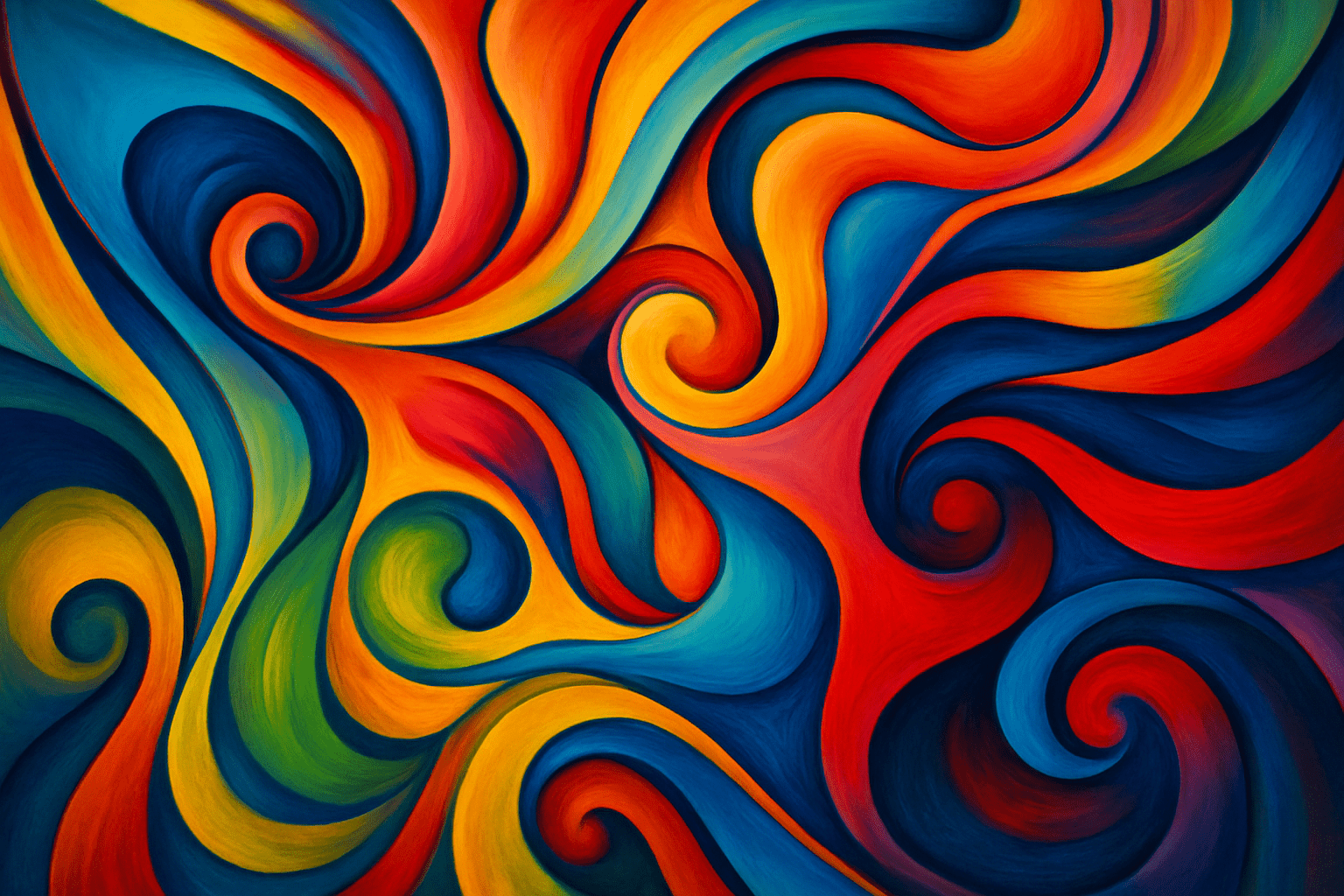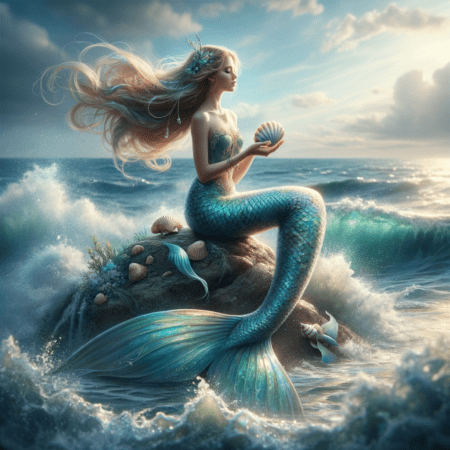
Mannerism
The art style Mannerism is characterized by its use of bright colors, its ornate details, and its overall dramatic appearance.
AOI thinking about Mannerism [+_~]-/
Overview and Quickfacts
Mannerism is a period of artistic style that emerged in the late 15th century and lasted until the early 17th century. The style is characterized by an artificiality and exaggeration of the Renaissance style, often resulting in compositions that are bizarre or unsettling.
Can understand it also, as:
Stylization, artificiality, mannerliness, affectation
Categorize it as:
Impressionism, Modernism
.: Dreaming :.
holds a HAIKU for the art style
:. Thought is power .:
Detailed Description
Mannerism is a period of European art that emerged from the later years of the Italian High Renaissance around 1520. It lasted until about 1580 in Italy, when a more classical style began to replace it, but Northern Mannerism continued into the early 17th century. Stylistically, Mannerism encompasses a variety of approaches influenced by, and reacting to, the harmonious ideals associated with artists such as Leonardo da Vinci, Raphael, and early Michelangelo. Where High Renaissance art emphasizes proportion, balance, and ideal beauty, Mannerism exaggerates these qualities, often resulting in compositions that are asymmetrical or unnaturally elegant. The style is notable for its intellectual sophistication as well as its artificial (as opposed to naturalistic) qualities. It favors compositional tension and instability rather than the balance and clarity of earlier Renaissance painting. Mannerism in literature and music is similar to that in the visual arts. The word mannerism derives from the Italian maniera, meaning “style” or “way”. Like the English word “style”, maniera can either indicate a specific type of style (a beautiful style, an elegant style) or indicate an absolute that needs no qualification (simply “style”). In the second edition of his Lives of the Most Excellent Painters, Sculptors, and Architects (1568), Giorgio Vasari used maniera in three different contexts: to discuss an artist’s manner or method of working; to describe a personal or group style, such as the style of an age or a court; and to indicate a non-specific style. Vasari was also one of the first to use the term to describe the style of a specific artist: Pontormo. Vasari wrote that Pontormo displayed “a most individual maniera which cannot be found in any other painter”. The definition of mannerism has been the subject of much debate. Many scholars have attempted to define the style, often resulting in contradictory definitions. In the 19th century, the term mannerism was used to describe the style of the Italian painter Giovanni Battista Moroni. This caused some consternation, as the term had previously been used to describe a completely different style, that of the Northern Mannerists. The 20th century saw a renewed interest in Mannerism, as scholars began to reassess the style in light of the more naturalistic approaches of the 19th century. A major scholar of Mannerism, James Ackerman, published a seminal article on the subject in 1966. Since then, a number of scholars have made important contributions to the understanding of Mannerism. Some of the most important artists associated with the Mannerist style include Pontormo, Parmigianino, Andrea del Sarto, Rosso Fiorentino, Bronzino, Girolamo Francesco Maria Mazzola (Parmigianino), Giulio Romano, and Tintoretto.
.. beep, beep, beep ..
<START OF TRANSMISSION>
1. Mannerism is a period in European art that lasted from approximately 1520 to 1600. 2. It is characterized by a highly stylized and artificial aesthetic. 3. Mannerist artists often used unusual perspectives and distorted proportions to create a sense of tension and drama. 4. The term "mannerism" comes from the Italian word maniera, meaning "style" or "way". 5. Mannerism was first used to describe the style of a group of 16th-century Italian painters. 6. In the 20th century, the term was expanded to include all art from the late Renaissance period. 7. Mannerism is sometimes seen as a reaction against the idealized art of the High Renaissance. 8. Many Mannerist artists were influenced by the art of ancient Greece and Rome. 9. The Mannerist movement began in Florence, Italy. 10. Some of the most famous Mannerist artists include Pontormo, Parmigianino, and Bronzino. 11. The Mannerist period saw a decline in the popularity of religious art. 12. Instead, secular works such as portraits and mythological scenes became more common. 13. Mannerist artists often used bright and contrasting colors to create a more striking effect. 14. They also frequently employed decorative elements such as strapwork and grotesques. 15. The Mannerist period was followed by the Baroque period in the early 1600s. 16. Many Mannerist artists were later rediscovered and appreciated during the 19th century. 17. Mannerism has been described as the first "modern" style of art. 18. It was a period of great experimentation, and artists were free to explore new ideas and techniques. 19. Mannerism was a truly international movement, with artists working in France, Germany, Spain, and England, as well as Italy. 20. The Mannerist style continued to influence artists well into the 17th century.
<EOF>
.. robbel bob
Visual Examples from our image gallery
Coming soon, we are so slow .. might never come
Artists, Paintings, and more
(be aware, can be highly speculative)
Artists (be aware, speculation possible):
1. Leonardo da Vinci (1452-1519) 2. Michelangelo (1475-1564) 3. Raphael (1483-1520) 4. Titian (1488-1576) 5. Tintoretto (1518-1594) 6. Pontormo (1494-1557) 7. Parmigianino (1503-1540) 8. Bronzino (1503-1572) 9. Girolamo Francesco Maria Mazzola (1528-1588) 10. Bartolomeo Passarotti (1529-1592) 11. Jacopo Zucchi (1541-1590) 12. Federico Zuccaro (1542-1609) 13. Domenico Beccafumi (1486-1551) 14. Andrea del Sarto (1486-1531) 15. Benvenuto Cellini (1500-1571) 16. Giambologna (1529-1608) 17. Jacopo Pontormo (1494-1557) 18. Rosso Fiorentino (1494-1540) 19. Parmigianino (1503-1540) 20. Giulio Romano (1499-1546) 21. Bartolomeo Ammannati (1511-1592) 22. Andrea Palladio (1508-1580) 23. Jacopo Tatti (1485-1560) 24. Giorgio Vasari (1511-1574) 25. Francesco Salviati (1510-1563) 26. Daniele da Volterra (1509-1566) 27. Alessandro Allori (1535-1607) 28. Lodovico Cigoli (1559-1613) 29. Orazio Gentileschi (1563-1639) 30. Artemisia Gentileschi (1593-1652/3)
Artworks (be aware, speculation possible)
1. “The Madonna of the Long Neck” by Parmigianino – 1534 2. “The Lamentation over the Dead Christ” by Parmigianino – 1534 3. “The Madonna with the Blue Diadem” by Parmigianino – 1535 4. “The Vision of Saint John on Patmos” by Domenico Beccafumi – 1523 5. “The Holy Family with the Young Saint John the Baptist” by Jacopo Pontormo – 1514 6. “Deposition from the Cross” by Pontormo – 1528 7. “Portrait of a Young Man in a Red Cap” by Pontormo – 1530 8. “Portrait of a Lady in White” by Pontormo – 1531 9. “Portrait of Cosimo I de’ Medici” by Bronzino – 1545 10. “Allegory of Venus and Cupid” by Bronzino – 1545 11. “An Allegory with Venus and Cupid” by Bronzino – 1550 12. “Equestrian Portrait of Cosimo I de’ Medici” by Bronzino – 1538 13. “Portrait of a Lady with a Puppy” by Bronzino – 1540 14. “Portrait of a Young Man” by Bronzino – 1540 15. “Portrait of a Young Woman” by Bronzino – 1541 16. “The Martyrdom of Saint Sebastian” by Andrea del Sarto – 1530 17. “The Annunciation” by del Sarto – 1528 18. “The Holy Family with the Infant Saint John the Baptist” by del Sarto – 1537 19. “The Madonna of the Harpies” by Francesco Salviati – 1543 20. “The Rape of Europa” by Salviati – 1545 21. “Venus, Cupid, Folly, and Time” by Agnolo Bronzino – 1545 22. “The Adoration of the Magi” by Bronzino – 1550 23. “The Adoration of the Shepherds” by Girolamo da Carpi – 1530 24. “The Baptism of Christ” by Carpi – 1532 25. “The Martyrdom of Saint Lawrence” by Carpi – 1532 26. “The Holy Family” by Carpi – 1534 27. “The Virgin and Child with Saints” by Carpi – 1535 28. “The Virgin and Child with the Young Saint John the Baptist” by Carpi – 1538 29. “The Madonna and Child with Saints” by Francesco Brizzi – 1575 30. “The Adoration of the Magi” by Brizzi – 1582
Epoch
The time period of the art style Mannerism is from the late 1500s to the early 1600s.
AI ART RESSOURCES (AKA, well Tools)
Helping tools -> predefined search links on other pages:











